Looking for our physiotherapy services?
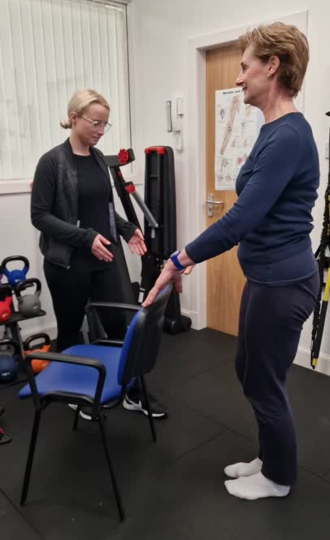
What is the Over Fifties service?
Stay independent and active
As people age, they may face various challenges that can lead to a loss of independence. Our rehabilitation team understands these challenges and works closely with older patients to counteract them.Our goal is to restore not just physical capabilities but also the confidence to lead an active, connected, and fulfilling life.
We offer a specialised approach designed to help older adults regain their independence, build confidence, and achieve meaningful life goals after experiencing challenges such as a stroke, fall, or surgery.
What to expect
As people age, they may face various challenges that can lead to a loss of independence. These challenges include decreased muscle strength, balance issues, chronic health conditions, and the recovery process after events like strokes, falls, or surgeries. Mobility can become limited, making it difficult to perform daily tasks such as walking, climbing stairs, or even standing up from a seated position. Additionally, cognitive changes and a fear of falling can further diminish confidence, leading to a more sedentary lifestyle and increased dependence on others.
Our rehabilitation team understands these challenges and works closely with elderly patients to counteract them. By focusing on building strength, improving balance, and enhancing overall physical function, we help patients regain the independence that may have been lost. Personalized therapy plans are designed to target the specific areas that impact daily living, from basic movements to more complex tasks. Through consistent support and tailored exercises, patients are empowered to reclaim their ability to manage household chores, enjoy social interactions, and maintain physical independence. Our goal is to restore not just physical capabilities but also the confidence to lead an active, connected, and fulfilling life.
Elder physiotherapy care is a specialised approach designed to help older adults regain their independence, build confidence, and achieve meaningful life goals after experiencing challenges such as a stroke, fall, or surgery. As we age, the physical and emotional impacts of these events can be profound, often leading to a loss of mobility, strength, and self-assurance. Through tailored exercises, therapeutic techniques, and compassionate support, elder physiotherapy empowers individuals to overcome these hurdles. Whether it’s walking unassisted again, returning to cherished activities, or simply feeling stronger day by day, physiotherapy plays a crucial role in helping elders recover and thrive in their golden years.
Life Goals
We are dedicated to helping elderly patients achieve their life goals by providing personalised and comprehensive rehabilitation care. Our team works closely with each patient to develop tailored therapy plans that focus on improving strength, balance, and mobility. By addressing the specific physical and emotional challenges that come with aging, we empower patients to regain their independence, perform daily activities with confidence, and engage in the activities they love. Whether it’s staying active with family and friends, managing household tasks, or simply enjoying a better quality of life, our goal is to support every patient in reaching their full potential.
Head, Neck and Shoulders
These areas often become prone to stiffness, pain, and reduced mobility due to aging, poor posture, or conditions like arthritis. As we age, muscle strength and joint flexibility naturally decline, which can lead to discomfort or injury. Your therapist will focus on improving mobility, alleviating pain, and preventing further degeneration.
A typical session may include exercises to strengthen the muscles around the neck and shoulders, stretches to improve flexibility, and manual therapy to release tension. Techniques like massage, ultrasound therapy, and heat applications may also be used to reduce pain and inflammation.
For those over 50, it's especially important to maintain proper alignment and muscle balance in these areas to prevent issues such as frozen shoulder or neck stiffness, both of which can limit daily activities and reduce overall quality of life.
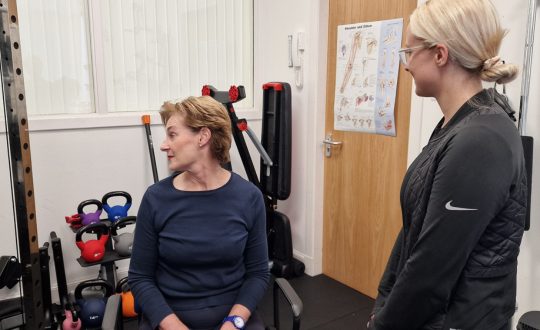
We can help with the following:
- Trapped nerve
- Restoring Movement
- Stiffness
- Headaches & Migraines
- Posture
- Upper body mobility
- Counter the effects of sitting
- Stiff & painful shoulders
- Whiplash
Head, Neck and Shoulders

These areas often become prone to stiffness, pain, and reduced mobility due to aging, poor posture, or conditions like arthritis. As we age, muscle strength and joint flexibility naturally decline, which can lead to discomfort or injury. Your therapist will focus on improving mobility, alleviating pain, and preventing further degeneration.
A typical session may include exercises to strengthen the muscles around the neck and shoulders, stretches to improve flexibility, and manual therapy to release tension. Techniques like massage, ultrasound therapy, and heat applications may also be used to reduce pain and inflammation.
For those over 50, it's especially important to maintain proper alignment and muscle balance in these areas to prevent issues such as frozen shoulder or neck stiffness, both of which can limit daily activities and reduce overall quality of life.
We can help with the following:
- Trapped nerve
- Restoring Movement
- Stiffness
- Headaches & Migraines
- Posture
- Upper body mobility
- Counter the effects of sitting
- Stiff & painful shoulders
- Whiplash
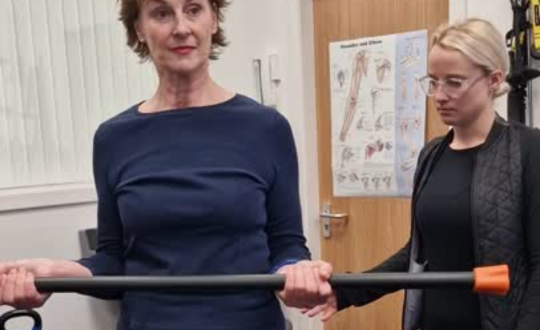
We can help with the following:
- Tennis Elbow
- Golf Elbow
- Arthritic Hands
- Grip Strength
- Preventing Repetitive Strain Injury
Wrists, Elbows and Hands
Wrists, elbows, and hands are common problem areas for individuals over 50, as age-related changes like arthritis, tendonitis, and repetitive strain injuries can significantly affect function and mobility. These areas are crucial for daily tasks, and pain or stiffness can hinder simple activities such as gripping, lifting, or typing.
Therapy for the wrists, elbows, and hands typically involves exercises to strengthen the muscles and improve joint flexibility, helping to maintain a healthy range of motion. Techniques may include resistance exercises, stretching, and manual therapy to reduce stiffness and pain. In some cases, splints or braces are used to support the joints and prevent further injury.
Common conditions treated in people over 50 include carpal tunnel syndrome, tennis elbow, and osteoarthritis. Our programme helps manage these conditions, providing relief from pain while improving function. Regular treatment also reduces the risk of injury and enhances the ability to perform everyday tasks efficiently.

Wrists, Elbows and Hands

Wrists, elbows, and hands are common problem areas for individuals over 50, as age-related changes like arthritis, tendonitis, and repetitive strain injuries can significantly affect function and mobility. These areas are crucial for daily tasks, and pain or stiffness can hinder simple activities such as gripping, lifting, or typing.
Therapy for the wrists, elbows, and hands typically involves exercises to strengthen the muscles and improve joint flexibility, helping to maintain a healthy range of motion. Techniques may include resistance exercises, stretching, and manual therapy to reduce stiffness and pain. In some cases, splints or braces are used to support the joints and prevent further injury.
Common conditions treated in people over 50 include carpal tunnel syndrome, tennis elbow, and osteoarthritis. Our programme helps manage these conditions, providing relief from pain while improving function. Regular treatment also reduces the risk of injury and enhances the ability to perform everyday tasks efficiently.
We can help with the following:
- Tennis Elbow
- Golf Elbow
- Arthritic Hands
- Grip Strength
- Preventing Repetitive Strain Injury
Back pain and Siatica
Back pain and sciatica are common concerns for individuals over 50, often resulting from age-related changes such as degenerative disc disease, arthritis, or poor posture. Intervention for managing these conditions provides relief from pain and improves mobility.
For back pain, therapy focuses on exercises that strengthen the core muscles, which support the spine, along with stretches to enhance flexibility and reduce tension in surrounding muscles. Manual therapy techniques, such as massage and mobilisation, are also used to relieve pain and improve spinal alignment.
Sciatica, characterized by pain radiating along the sciatic nerve from the lower back down the leg, is often caused by herniated discs or spinal stenosis. Therapy for sciatica aims to reduce pressure on the nerve through targeted exercises, postural correction, and sometimes traction therapy.
For individuals over 50, consistent treatment helps maintain mobility, reduces the risk of recurring pain, and supports overall spine health for an active, independent lifestyle.
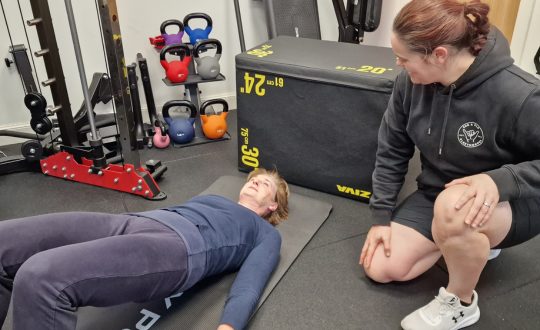
We can help with the following:
- Sciatica
- Back Pain
- Lower back posture
- Pain into your leg
- Slipped Discs
- Spinal Stenosis
- Piriformis Syndrome
Back pain and Siatica

Back pain and sciatica are common concerns for individuals over 50, often resulting from age-related changes such as degenerative disc disease, arthritis, or poor posture. Intervention for managing these conditions provides relief from pain and improves mobility.
For back pain, therapy focuses on exercises that strengthen the core muscles, which support the spine, along with stretches to enhance flexibility and reduce tension in surrounding muscles. Manual therapy techniques, such as massage and mobilisation, are also used to relieve pain and improve spinal alignment.
Sciatica, characterized by pain radiating along the sciatic nerve from the lower back down the leg, is often caused by herniated discs or spinal stenosis. Therapy for sciatica aims to reduce pressure on the nerve through targeted exercises, postural correction, and sometimes traction therapy.
For individuals over 50, consistent treatment helps maintain mobility, reduces the risk of recurring pain, and supports overall spine health for an active, independent lifestyle.
We can help with the following:
- Sciatica
- Back Pain
- Lower back posture
- Pain into your leg
- Slipped Discs
- Spinal Stenosis
- Piriformis Syndrome
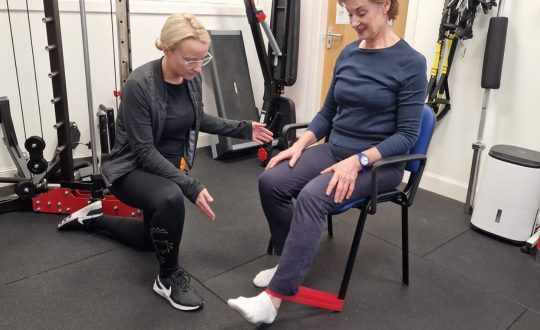
We can help with the following:
- Hips mobility
- knee mobility
- Knee pain
- Hip pain
- Clicking knees
- Hip swivel
- Trouble walking
- Strengthening
- Balance
- Hip Arthritis
- Knee Arthritis
- Hip Surgery
- Knee Surgery
Hips and knees
Hips and knees are critical joints that bear much of the body’s weight, and as individuals over 50 age, they are often affected by conditions like osteoarthritis, muscle weakness, or previous injuries. Therapy plays an essential role in managing pain, improving function, and preventing further degeneration in these joints.
For hip and knee issues, treatment focuses on strengthening the surrounding muscles, such as the quadriceps, hamstrings, and gluteal muscles, to better support the joints and reduce stress. Stretching exercises are used to improve flexibility, while balance training can enhance stability and prevent falls. Manual therapy techniques, such as massage or joint mobilization, may also be applied to reduce stiffness and pain.
For conditions like hip bursitis or knee arthritis, your therapist may recommend specific exercises tailored to your needs. Regular treatment can help improve mobility, reduce pain, and promote joint health, enabling you to stay active and maintain a better quality of life.
Hips and knees

Hips and knees are critical joints that bear much of the body’s weight, and as individuals over 50 age, they are often affected by conditions like osteoarthritis, muscle weakness, or previous injuries. Therapy plays an essential role in managing pain, improving function, and preventing further degeneration in these joints.
For hip and knee issues, treatment focuses on strengthening the surrounding muscles, such as the quadriceps, hamstrings, and gluteal muscles, to better support the joints and reduce stress. Stretching exercises are used to improve flexibility, while balance training can enhance stability and prevent falls. Manual therapy techniques, such as massage or joint mobilization, may also be applied to reduce stiffness and pain.
For conditions like hip bursitis or knee arthritis, your therapist may recommend specific exercises tailored to your needs. Regular treatment can help improve mobility, reduce pain, and promote joint health, enabling you to stay active and maintain a better quality of life.
We can help with the following:
- Hips mobility
- knee mobility
- Knee pain
- Hip pain
- Clicking knees
- Hip swivel
- Trouble walking
- Strengthening
- Balance
- Hip Arthritis
- Knee Arthritis
- Hip Surgery
- Knee Surgery
Feet and ankles
Feet and ankle treatments are vital for individuals over 50 as age-related issues like arthritis, decreased flexibility, and weakened muscles can affect stability, mobility, and overall function. These areas bear the body’s weight, and problems in the feet and ankles can lead to difficulties in walking, increased risk of falls, and joint pain.
Treatment for the feet and ankles focuses on improving strength, flexibility, and balance. Exercises such as toe raises, ankle circles, and resistance band work can strengthen the muscles supporting the joints, while stretching helps improve flexibility and range of motion. Manual therapy techniques, like massage or joint mobilisation, may also be used to reduce stiffness and improve mobility.
For individuals over 50, proper foot mechanics are crucial for preventing conditions like plantar fasciitis, Achilles tendonitis, or ankle sprains. Regular therapy not only improves movement but also supports overall lower limb health, enhancing stability and reducing the risk of injury.
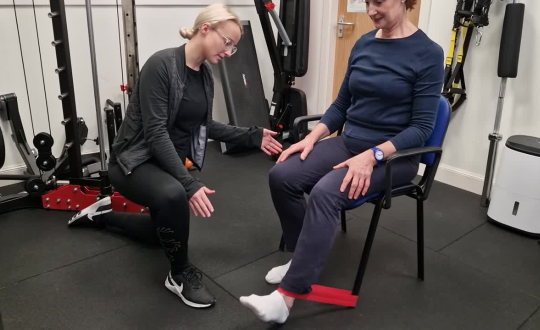
We can help with the following
- Ankle mobility
- Achilles tendon pain
- Flat feet
- Twisted ankle
- Plantar Fascia Heal Pain
- Custom orthotics
- Tight calves
- Improve walking
Feet and ankles

Feet and ankle treatments are vital for individuals over 50 as age-related issues like arthritis, decreased flexibility, and weakened muscles can affect stability, mobility, and overall function. These areas bear the body’s weight, and problems in the feet and ankles can lead to difficulties in walking, increased risk of falls, and joint pain.
Treatment for the feet and ankles focuses on improving strength, flexibility, and balance. Exercises such as toe raises, ankle circles, and resistance band work can strengthen the muscles supporting the joints, while stretching helps improve flexibility and range of motion. Manual therapy techniques, like massage or joint mobilisation, may also be used to reduce stiffness and improve mobility.
For individuals over 50, proper foot mechanics are crucial for preventing conditions like plantar fasciitis, Achilles tendonitis, or ankle sprains. Regular therapy not only improves movement but also supports overall lower limb health, enhancing stability and reducing the risk of injury.
We can help with the following
- Ankle mobility
- Achilles tendon pain
- Flat feet
- Twisted ankle
- Plantar Fascia Heal Pain
- Custom orthotics
- Tight calves
- Improve walking
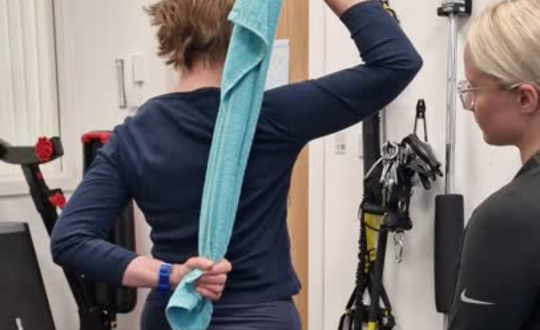
We can help with the following
- Resistance training
- Osteoporosis
- Broken bones
- Managing weight
- Gain muscle
- Getting up from the floor
- Safe stair usage
- Fix your walking
Whole body health
Considering your whole-body health for individuals over 50 is essential for maintaining strength, mobility, and independence. Resistance training plays a critical role in preserving muscle mass, which naturally declines with age. It also helps improve balance and bone density, reducing the risk of osteoporosis — a condition where bones become brittle and are more prone to breakage. Regular weight-bearing exercises, like squats and lunges, strengthen bones and prevent fractures.
Managing weight becomes crucial, as excess weight can strain joints, making movement more difficult. Resistance training also aids in gaining muscle, improving metabolism, and reducing fat.
Functional exercises, such as practicing how to get up from the floor, can help maintain independence and prevent injuries from falls. Safe stair usage focuses on strengthening leg muscles and balance to reduce the risk of tripping. Additionally, improving gait and posture can fix walking mechanics, enhancing mobility and reducing pain in daily activities. These strategies together support overall health and mobility as we age.
Whole body health

Considering your whole-body health for individuals over 50 is essential for maintaining strength, mobility, and independence. Resistance training plays a critical role in preserving muscle mass, which naturally declines with age. It also helps improve balance and bone density, reducing the risk of osteoporosis — a condition where bones become brittle and are more prone to breakage. Regular weight-bearing exercises, like squats and lunges, strengthen bones and prevent fractures.
Managing weight becomes crucial, as excess weight can strain joints, making movement more difficult. Resistance training also aids in gaining muscle, improving metabolism, and reducing fat.
Functional exercises, such as practicing how to get up from the floor, can help maintain independence and prevent injuries from falls. Safe stair usage focuses on strengthening leg muscles and balance to reduce the risk of tripping. Additionally, improving gait and posture can fix walking mechanics, enhancing mobility and reducing pain in daily activities. These strategies together support overall health and mobility as we age.
We can help with the following
- Resistance training
- Osteoporosis
- Broken bones
- Managing weight
- Gain muscle
- Getting up from the floor
- Safe stair usage
- Fix your walking
Independence around the home
Maintaining independence around the home for individuals over 50 is essential for a fulfilling and active lifestyle. Everyday tasks like using the kettle can be safer with proper grip strength and a light, ergonomic design. Using stairs requires strong leg muscles and balance, which can be improved through regular exercises, ensuring safe navigation.
Getting in and out of bed can become challenging as flexibility decreases, so practicing functional movements helps ease transitions. For toilet independence, having strong core muscles is crucial, and grab bars can offer additional support.
Reaching high cupboards safely involves both balance and upper body strength, while getting up from the floor can be aided by practicing controlled movements and maintaining mobility.
Tasks like carrying shopping demand arm and back strength, while playing with grandkids and walking the dog require stamina, flexibility, and joint health. Regular exercises that enhance these areas can help older adults stay independent and active.
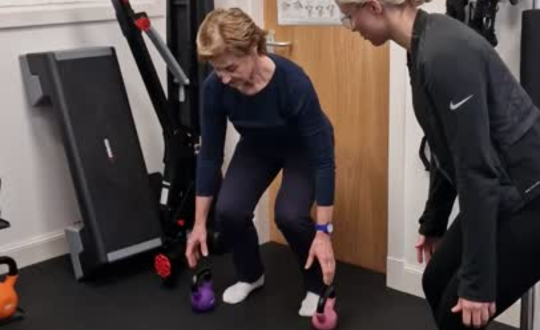
We can help with the following:
- Using the kettle
- Using stairs
- Getting in and out of bed
- Toilet independence
- Access high cupboards
- Getting up from the floor
- Carrying shopping
- Playing with grandkids
- Walking the dog
Independence around the home

Maintaining independence around the home for individuals over 50 is essential for a fulfilling and active lifestyle. Everyday tasks like using the kettle can be safer with proper grip strength and a light, ergonomic design. Using stairs requires strong leg muscles and balance, which can be improved through regular exercises, ensuring safe navigation.
Getting in and out of bed can become challenging as flexibility decreases, so practicing functional movements helps ease transitions. For toilet independence, having strong core muscles is crucial, and grab bars can offer additional support.
Reaching high cupboards safely involves both balance and upper body strength, while getting up from the floor can be aided by practicing controlled movements and maintaining mobility.
Tasks like carrying shopping demand arm and back strength, while playing with grandkids and walking the dog require stamina, flexibility, and joint health. Regular exercises that enhance these areas can help older adults stay independent and active.
We can help with the following:
- Using the kettle
- Using stairs
- Getting in and out of bed
- Toilet independence
- Access high cupboards
- Getting up from the floor
- Carrying shopping
- Playing with grandkids
- Walking the dog
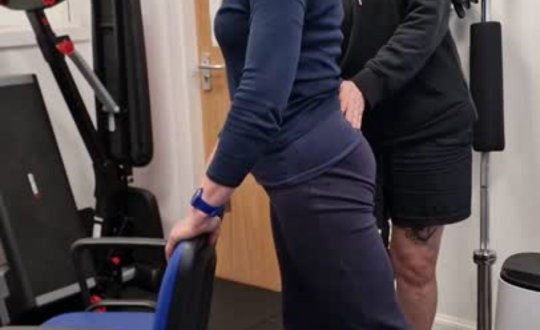
We can help with the following
- Strengthening
- Mobility
- Balance
- Stability
- Mindfulness
- What to do in an emergency
- Emergency preparation
Preventing falls
Preventing falls is a critical focus for individuals over 50, as aging often brings decreased balance, muscle strength, and joint flexibility, which can increase fall risk. Physical therapy plays a vital role in fall prevention by addressing these areas through targeted exercises and training.
Your therapist will work with you to strengthen key muscle groups, particularly in the legs and core, which support stability and coordination. Balance exercises, such as standing on one leg or using balance boards, are commonly used to improve proprioception and reaction time. Stretching helps maintain joint flexibility, which is important for avoiding stiffness that can lead to missteps.
Functional training, like practicing safe ways to get up from a chair or navigating stairs, helps reinforce daily movement patterns. Additionally, your therapist may assess walking gait and recommend adjustments or assistive devices if needed. By focusing on strength, balance, and mobility, treatment can significantly reduce the likelihood of falls, promoting a safer, more independent lifestyle.
Preventing falls

Preventing falls is a critical focus for individuals over 50, as aging often brings decreased balance, muscle strength, and joint flexibility, which can increase fall risk. Physical therapy plays a vital role in fall prevention by addressing these areas through targeted exercises and training.
Your therapist will work with you to strengthen key muscle groups, particularly in the legs and core, which support stability and coordination. Balance exercises, such as standing on one leg or using balance boards, are commonly used to improve proprioception and reaction time. Stretching helps maintain joint flexibility, which is important for avoiding stiffness that can lead to missteps.
Functional training, like practicing safe ways to get up from a chair or navigating stairs, helps reinforce daily movement patterns. Additionally, your therapist may assess walking gait and recommend adjustments or assistive devices if needed. By focusing on strength, balance, and mobility, treatment can significantly reduce the likelihood of falls, promoting a safer, more independent lifestyle.
We can help with the following
- Strengthening
- Mobility
- Balance
- Stability
- Mindfulness
- What to do in an emergency
- Emergency preparation
Neuro & dementia
Neuro and dementia treatments focus on maintaining and improving physical and cognitive function in individuals affected by neurological conditions or dementia. Strengthening exercises help build and preserve muscle mass, which is crucial for everyday tasks and overall mobility. A tailored program can target muscles essential for walking, standing, and lifting, aiding in the individual's ability to maintain independence.
Improving mobility and balance is a key focus, as these abilities tend to decline with neurodegenerative conditions. The therapist incorporates balance and stability exercises to reduce the risk of falls and maintain coordination. Mindfulness techniques, such as breathing exercises or body awareness, can help individuals stay present and engaged during therapy, enhancing both mental and physical outcomes.
In an emergency, the therapist can teach caregivers and patients how to stay calm and apply basic safety procedures. Emergency preparation involves creating safe environments, ensuring easy access to help, and practicing what to do if a fall or other emergency occurs. This holistic approach helps support both physical and mental well-being.
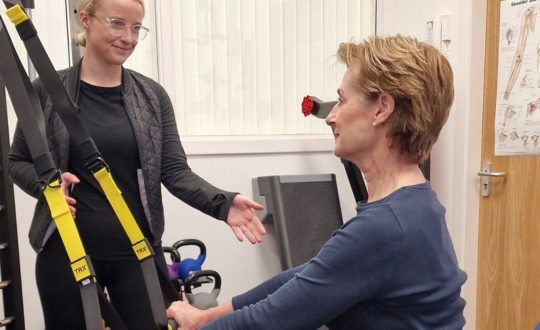
We can help with the following
- Strengthening
- Mobility
- Balance
- Stability
- Mindfulness
- What to do in an emergency
- Emergency preparation
Neuro & dementia

Neuro and dementia treatments focus on maintaining and improving physical and cognitive function in individuals affected by neurological conditions or dementia. Strengthening exercises help build and preserve muscle mass, which is crucial for everyday tasks and overall mobility. A tailored program can target muscles essential for walking, standing, and lifting, aiding in the individual's ability to maintain independence.
Improving mobility and balance is a key focus, as these abilities tend to decline with neurodegenerative conditions. The therapist incorporates balance and stability exercises to reduce the risk of falls and maintain coordination. Mindfulness techniques, such as breathing exercises or body awareness, can help individuals stay present and engaged during therapy, enhancing both mental and physical outcomes.
In an emergency, the therapist can teach caregivers and patients how to stay calm and apply basic safety procedures. Emergency preparation involves creating safe environments, ensuring easy access to help, and practicing what to do if a fall or other emergency occurs. This holistic approach helps support both physical and mental well-being.
We can help with the following
- Strengthening
- Mobility
- Balance
- Stability
- Mindfulness
- What to do in an emergency
- Emergency preparation
